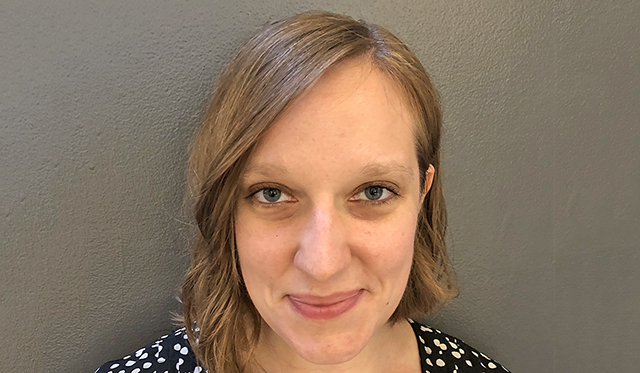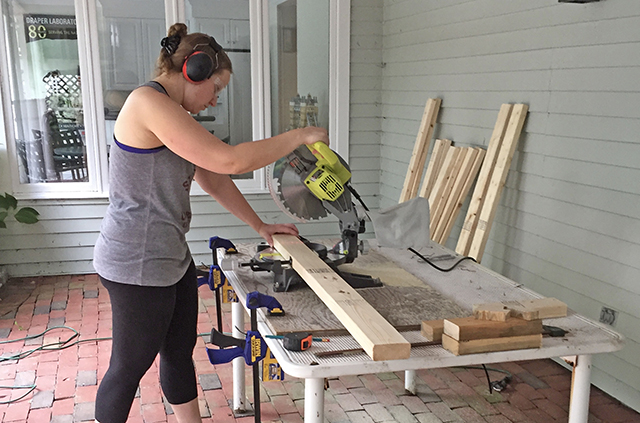Making biomedical science fiction a reality
Beth Shields distinctly remembers the first time she watched the scene at the end of Star Wars: The Empire Strikes Back where Luke Skywalker is outfitted with a prosthetic hand. For Shields, it was more than just a cliffhanger ending to a classic sci-fi movie—it was a transformative experience that piqued her interest in biomedical engineering.
Fast forward 20 years and Shields, S.B. ’10, is now a principle systems engineer at the medical technology firm Medtronic, where instead of creating prosthetics for Jedi, she is developing robotic platforms that which enable surgeons to operate while sitting at a console.
The robotic platforms provide ergonomic benefits that can make clinicians more efficient, while improving the precision with which they can operate, Shields explained.
“I really enjoy being connected to the patients and envisioning the improvements we are going to be able to make to surgical procedures,” she said. “Pushing the boundaries of surgery into the future is the most rewarding aspect of my work.”

As principle systems engineer, Shields’ role is to bridge the gap between the systems engineering and software engineering groups. She works closely with customers to identify their needs, and coordinates with clinical teams to iron out the medical implications. Translating that information, she works with hardware and software groups to evaluate tradeoffs and make design decisions to create the safest and most effective product for patients.
“One of the biggest challenges comes from the diverse set of users for our products,” she said. “For the patient, the therapy has to be done correctly, but you also have to understand the capabilities of the technology you are working with. But then there is this additional customer -- the surgeon who is going to actually use the device.”
To be effective, Shields relies on soft skills, like effective communication and collaboration, she developed while pursuing a biomedical engineering concentration at the Harvard John A. Paulson School of Engineering and Applied Sciences (SEAS).
Though she was dead-set on biomedical engineering from a young age, her desire to explore different disciplines and collaborate led her to Harvard.
Shields saw firsthand the power of collaboration while working on her senior design project in the lab of Hugh Herr, who heads the Biomechatronics group at the MIT Media Lab. She developed a pair of crutches that use springs to store kinetic energy from a patient’s biceps and triceps muscles, making it easier to climb stairs.
After graduation, she joined DEKA Research and Development as a quality assurance test manager, conducting verification testing on a human dialysis machine that was undergoing a clinical trial.
“People use dialysis devices three days a week, so having to push to turn around product improvements when someone is going to need the device in a day or two creates a high-pressure environment,” she said. “That was both challenging and exciting. It was game-day-type energy, but I liked it a lot.”

Outside the lab, Shields enjoys making furniture and cooking (below). (Photos courtesy of Beth Shields.)
Seeking more research experience, Shields completed a master’s degree in electrical and electronics engineering at Stanford University.
Working in a lab that was part of the collaborative BrainGate project, her team implanted electoarrays into the motor cortexes of quadriplegic patients that allow them to control robotic prosthetics with brain signals.
Shields engineered prosthetics so they could respond to those signals, taking outputs from electroarrays and mapping them to computer mouse signals.
This was now way beyond Star Wars.
“Even on our bad days, we were doing something that seemed like science fiction when I was a kid,” she said.
Shields joined Medtronic after completing her degree so she could continue to work in a constantly evolving field.
 New technology, from enhanced algorithmic decision making to more precise vision capabilities in 3D cameras, leads to fast-paced changes in surgical robotics. As more automation, filtering, and data processing tools are incorporated into robotic platforms, they will be able to play an even larger role in planning surgical tasks.
New technology, from enhanced algorithmic decision making to more precise vision capabilities in 3D cameras, leads to fast-paced changes in surgical robotics. As more automation, filtering, and data processing tools are incorporated into robotic platforms, they will be able to play an even larger role in planning surgical tasks.
For Shields, being on the cutting edge of surgery is far more inspiring than any sci-fi movie scene.
“Thinking about what surgery looked like 10 years ago versus what it looks like now, and then understanding what we can do for it in the future is inspiring,” she said. “I really feel like I am able to help people and enable better outcomes from the same kinds of experiences patients have been undergoing for years.”